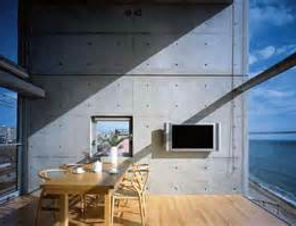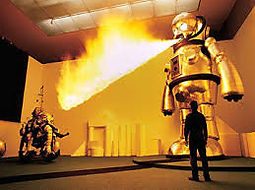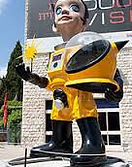
Yokoo Tadanori
Tadanori Yokoo is a Japanese graphic designer, illustrator, printmaker and painter. Born in Nishiwaki, Hyōgo prefecture in 1936, Yokoo is one of Japan's most successful and influential graphic designer and artist. He began his career as a stage designer for avant garde theatre in Tokyo. His early work shows the influence of the New York based Push Pin Studio but he himself cites filmmaker Akira Kurosawa and writer Yukio Mishima as two of his most formative influences.





Okamoto Taro
Tarō Okamoto was a Japanese artist noted for his abstract and avant-garde paintings and sculptures. He was the son of cartoonist Ippei and writer Kanoko Okamoto. Studied at Panthéon-Sorbonne in the 1930s, he created many works of art after World War II.
He was a prolific artist and writer until his death, and has exerted considerable influence on Japanese society.






Whether it is a stacked amount of newspapers, a large rubbish can, or a thrown away manga comic weeklies, Mishima radiates and reflects back to the audience our somewhat enslaved relationship with ‘information’. In an almost quiet and beautiful state, her ceramic works highlight our tendency to consume and abandon with the blink of an eye.
Her work is to be used as both a warning and statement of the accelerated growth of waste and the overflow of information. Her dry humour and tactile pieces is a constant reminder of the delicacy of our environment and our collective part within it.
Kimiyo Mishima






Tadao Ando is a Japanese self-taught architect whose approach to architecture and landscape was categorized by architectural historian
Francesco Dal Co as "critical regionalism".
Tadao Ando





Yayoi Kusama
Yayoi Kusama is a Japanese artist and writer. Throughout her career she has worked in a wide variety of media, including painting, collage, sculpture, performance art, and environmental installations, most of which exhibit her thematic interest in psychedelic colors, repetition and pattern. A precursor of the pop art, minimalist and feminist art movements, Kusama influenced contemporaries such as Andy Warhol and Claes Oldenburg. Although largely forgotten after departing the New York art scene in the early 1970s, Kusama is now acknowledged as one of the most important living artists to come out of Japan, and an important voice of the avant-garde.










Yanobe Kenji
Japanese artist is famous for his upbeat yet nightmarish artwork. His sculpture simulates consumer products designed for surviving a nuclear holocaust. Yanobe's sculpture closely fits a modern Japanese consumer aesthetic. His pieces, often based on robots, appear to be the products of the most modern industrial design: bright colors, polished metal, articulated joints, and shiny finish. However, they betray a fear of nuclear war. Yanobe's artwork includes brightly colored hazmat suits and tiny action figures with built-in geiger counters, which pose the question: Would life after a nuclear war be possible, and if it were, would it be worth living?
F. R. D. Hundertwasser
Friedensreich R. D. Hundertwasser was an Austrian artist and architect. who worked also in the field of environmental protection. His real name being Stowasser, his pseudonym Hundertwasser (by which he is known worldwide) comes from "STO" in Slavic languages meaning "hundred". He stood out as an opponent of "a straight line" and any standardization, expressing this concept in the field of building design.
His best known work is considered to be Hundertwasserhaus in Vienna and the Maishima Garbage complex in Osaka - a highlight of most of our tours - both of which are characterized by imaginative vitality and uniqueness.










Toshio Saeki
One of Japan’s most infamous artists, Toshio Saeki has cultivated a unique and shocking style, blending traditional Japanese technique with his own twisted imagination. Saeki’s artwork is the harmonious synthesis of a perverse vision and an incredible artistic ability, challenging social norms by placing the unconscious in plain view.
Seibo Kitamura
Seibo Kitamura ,was a Japanese sculptor, who lived to 102. He known as the sculptor of the 10-meter-tall Peace Statue in Nagasaki Peace Park, unveiled in 1955. The 60’s were his most prolific period, during which humanistic anti-war works poured out of him. Born in 1884, he studied art in Kyoto and Tokyo, spend some time in the military, was inducted into the Japan Art Academy in 1925.








